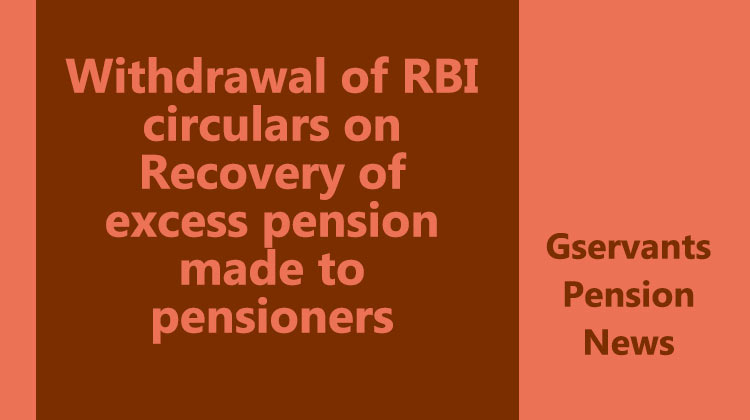Understanding The New Pension System
Subscriber Information Brochure for Government Subscribers
Pension Fund Regulatory and Development Authority (PFRDA) is an Authority to promote old age income security by establishing, regulating and developing pension funds to protect the interest of subscribers in schemes of pension funds and for matters connected therewith or incidental thereto.
National Pension System (NPS) means the contributory pension system whereby contributions from subscribers along with matching contributions from respective governments as an employer, are collected and accumulated in an individual pension account. NPS uses a system of Government/ Autonomous. Bodies’ Nodal offices, a Central Recordkeeping Agency (CRA) and designated Pension Funds (PFs), as specified by the respective regulations from time to time to achieve synergy and maximum efficiency in operations.
NPS is mandatory to all employees joining services of Central Government (except Armed Forces) and Central Autonomous Bodies on or after 1st January 2004.
Almost all State Governments have adopted NPS architecture and have implemented NPS mandatorily through Gazette Notifications for the State Government/ Autonomous body employees joining on or after their respective cut-off dates.
As a subscriber under NPS you are provided with an individual pension account identified by Permanent Retirement Account Number (PRAN) which is unique & portable across locations and employments. The Card provided to you contains your PRAN, Father’s name, Photograph and Signature/ Thumb impression.
Along with your PRAN card you are also provided with Internet Personal Identification Number (I-PIN) and Tele-query Personal Identification Number (T-PIN) through which you can access your pension account via internet (through CRA website www.npscra.nsdl.co.in) or telephonically at CRA Helpline (1800222080), respectively.
Benefits of NPS:
• Dual benefit of Low Cost & Power of Compounding: The pension wealth accumulates over a period of time till retirement; grows with a compounding effect and the account maintenance charges being low, larger would be the eventual benefit of the accumulated pension wealth
• Tax Benefits: Benefits available under Section 80 CCD(1) and 80 CCD(2) as per relevant sections of Income Tax Act 1961.
• Safety: Regulated by the Pension Fund Regulatory & Development Authority (PFRDA) and introduced by the Government of India
• Transparency: Through online access to your pension account.
• Portability: Across all geographical locations and employments across India
Under NPS, two types of accounts are available to you i.e., Tier I & Tier II
• Tier I account – where you and the Government contribute funds into your individual account. As a subscriber you contribute 10% of your Basic Pay and DA into your Tier-I account on a mandatory basis every month, which is invested along with the matching contribution from the employer. The regular NPS contributions and the accumulated amounts are reflected in your PRAN while you are in service and shall be used at retirement for procurement of your pension.
• Tier II account – a voluntary savings account from which you are free to withdraw the savings at your own choice. An active Tier I account along with PRAN is a pre requisite for opening of a Tier II. You can approach any Point of Presence- Service Provider (POP-SP- list available at CRA website www.npscra.nsdl.co.in) for activation of Tier II account along with a copy of PRAN card and PAN card. Furthermore, since Tier II is a voluntary savings account, the government does not contribute any amount into your Tier II account and no tax benefits are available for the contributions made.
Investments of NPS Contributions: Your contributions are allocated to three Public Sector Pension Fund Managers, viz. SBI Pension Funds Private Limited, UTI Retirement Solutions Limited and LIC Pension Fund Limited and each of the PFs invests the funds in the proportion of upto 55% in Government securities, upto 40% in Debt securities, upto 15% in Equity and upto 5% in Money Market instruments.
Statement of Transaction (SOT): This contains the details of transactions carried out in your pension account. It contains details of contribution amount invested and units allocated during the financial year, unit holdings as on date across all PFs and any changes in your PRAN details. You can access your SOT through CRA website using your I-PIN. Also, the CRA sends a copy of the SOT annually to your mailing address registered with CRA.
Grievance Redressal: You can raise the grievance/complaint through CRA Call centre using your T-PIN or through the CRA website using your I-PIN under CGMS (Central Grievance Management System). A duly filled Form G1 (available at CRA website) may also be sent to CRA for lodging a grievance. You can also contact your Nodal office for resolving your grievance; the Nodal office may lodge the grievance on your behalf in CGMS. In case you are dissatisfied with the resolution of your grievance, you may write to Grievance Redressal Cell (GRC), PFRDA at the below mentioned address for taking appropriate action.
Withdrawal & Exit: As per the guidelines for withdrawal stipulated by PFRDA and in terms of the exit regulations under NPS, the subscriber exits form National Pension System (NPS) in one of the following ways:
· Upon Normal Superannuation (retirement): At least 40% of the accumulated pension wealth of the subscriber needs to be utilized for purchase of annuity providing for monthly pension to the subscriber and balance is paid as lump sum payment to the subscriber. However, the subscriber may opt for withdrawal of total pension wealth if it is less than Rs. 2 lakhs and in such a case no other benefit like pension etc are available.
· Upon Death: The entire accumulated pension wealth (100%) would be paid to the nominee/legal heir of the subscriber and there would not be any purchase of annuity/monthly pension.
· Exit from NPS before the age of normal superannuation (irrespective of cause): At least 80% of the accumulated pension wealth of the subscriber needs to be utilized for purchase of annuity providing for monthly pension to the subscriber and the balance is paid as a lump sum payment to the subscriber
Annuity: Annuity provides for monthly pay-outs to the individual in lieu of the lump sum amount paid to the Annuity Service Provider (ASP) from NPS scheme as per percentage specified by the subscriber at the time of exit.
Annuity Service Provider and Annuity Scheme shall be provided strictly in accordance by choice made by the subscriber at the time of exit from NPS. The details of the empanelled ASPs, types of annuity offered and annuity calculators are available at web link on CRA website.
Download to Read More : Subscriber Information Brochure for Government Subscribers
Source:PFRDA


I request to give two or three orders of sanctioned , as we also want our employees to join NPS.Also the rate of return or effective pension .